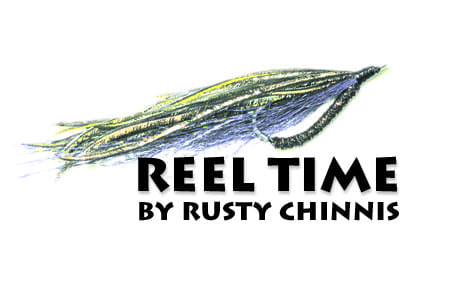Tarpon season is one of the most anticipated times of the year on local waters. While it’s possible to encounter tarpon occasionally most every month of the year, April through July is the time savvy anglers turn their attention to these silver piscatorial gladiators. Their arrival in numbers worth pursuing is generally dependent on water temperature. The magic number is debatable but when water temperatures reach into the 70s, ardent anglers take notice. When that number reaches the high 70s to low 80s, they mobilize.
Locally we have some of the best tarpon fishing in the world. For most anglers this isn’t a numbers game, it’s the pursuit, and it’s the surroundings and the action that keeps them pinned to the bow. Tackle should match the size of the quarry. Most anglers opt for a 20- to 30-pound spin and/or 11- to 12-weight fly outfits. A heavy bite tippet is required because of the size of tarpon and their rasp-like mouth. Fly anglers generally use 60- to 80-pound tippet while spin anglers choose 70- to 100-pound test. While it might seem like a difficult task to land a tarpon on the fly, or any tackle for that matter, an angler who knows the limits of her gear can actually land a tarpon in a surprisingly short period of time. The key is to apply maximum pressure from the hookup and never let up. Too many anglers “baby” their tarpon in a misguided attempt to land them. The truth is that the longer you fight a tarpon the better chance you have of losing it.

A properly (IGFA-approved) tied tarpon leader used by fly fishers usually runs between 10-12 feet and is tapered to accurately deliver the fly. The leader includes a class tippet (weakest link) from 16-20 pounds that is doubled at both ends to soften the (shock) impact to the class tippet and bite tippet. Key to the whole equation is to have a very sharp hook as tarpon have extremely tough mouths. Conventional leaders vary from angler to angler, but a doubled standing line tied to a leader and then to the bite “tippet” with a blood knot or Albright Special won’t fail you.
Flies vary from the classic splayed feather “Keys” style to more complex designs like the “Toad,” various baitfish imitations and Paolo worm flies. Some fly anglers are not concerned with landing a tarpon, preferring to just enjoy the hunt, the hook up and the jumps that usually follow the hook set. They use light bite tippets which allows the tarpon to work through the leader with their abrasive mouths. The key to landing tarpon on the fly is accuracy. The fly must be placed perfectly, move in a precise direction relative to the fish and be at the proper (fishes’) depth. Even when all of these factors come together, there’s still about a 50% chance that the tarpon will reject the fly, assuming that the condition of local waters don’t repel them first.
The most important thing I would like for you to take away from this article is to be courteous when tarpon fishing. Don’t try to run down a school of tarpon. If another boat is working a school, find another or hopscotch wide around for a shot. Tarpon fishing is all catch and release unless you’ve purchased a special tarpon tag. It is also illegal to take tarpon over 40” out of the water. Try tarpon fishing on your own, or better yet, hire one of the talented local guides listed in these pages to show you the ropes.
Credit: Source link






























